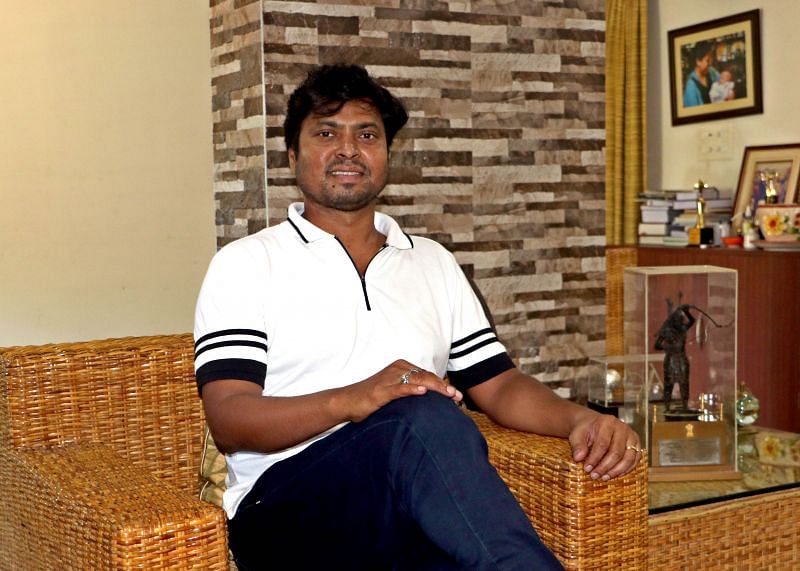
A decade later, Dilip Tirkey continues to inspire hockey aspirants
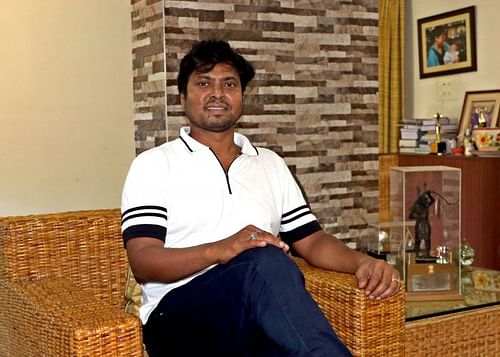
On the evening of May 2 2010, one of the world’s most dependable defenders, Dilip Tirkey, stood in front of a handful of journalists gathered at the Kalinga Stadium in Bhubaneswar to announce his retirement from professional field hockey.
Dilip Tirkey’s 15-year-long career was coming to an end. There were no official dignitaries, fans and long speeches detailing the highs and lows - of which there were a few - just a simple two-line announcement delivered by Dilip Tirkey himself. The stadium didn’t even have a hockey turf back then, and players would practice in the makeshift grounds of the stadium.
Ten years later, the same Kalinga stadium, revamped to justify Bhubaneswar’s ‘hockey capital of the world’ tag, sees rousing applause for players from across the world. The organic growth of the game is being imbued with a shot of strong marketing support from the state government itself.
Standing in front of this jazzed-up stadium, boasting of the finest turf and state-f-the-art facilities, Odisha hockey’s best-known face, though, remains unchanged. Dilip Tirkey is surprisingly humble, almost uncomfortable, one would say, with praise or fame.
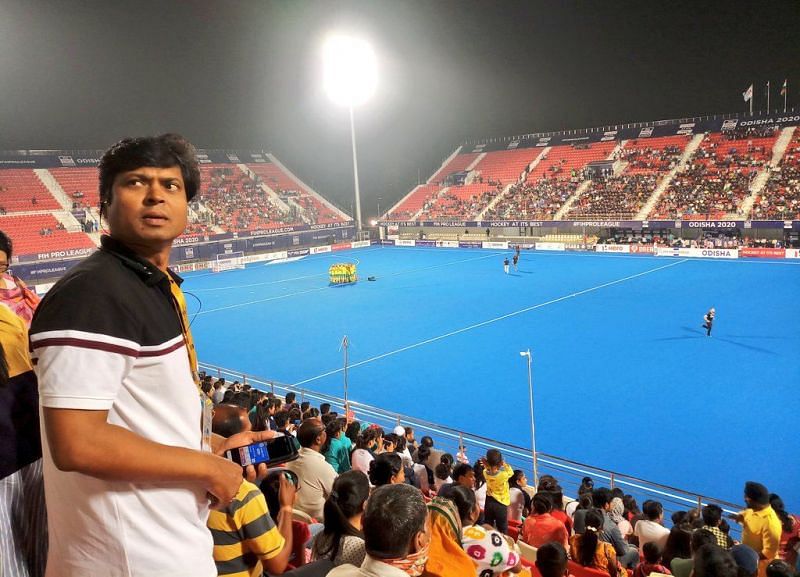
“Ten years have passed! Can you believe it? It feels like I retired just yesterday,” says Dilip Tirkey, the former Indian captain and now Chairman of the Odisha Hockey Promotion Council.
He takes questions, pauses for a bit, scratches his forehead before replying in a measured and succinct manner. There is a cautious effort to avoid any controversy.
“I have always been like this - quiet and shy. I talk only when it is required,” says Dilip Tirkey at his two-storied government bungalow in Bhubaneswar.
It is a well-furnished room that has all the trophies that marked his achievements in hockey. The Arjuna Award sits on the table beside the deep-seated comfortable sofa Dilip Tirkey sits on.
While Dilip Tirkey wore the blue jersey of the Indian national hockey team, his swift footwork and wizardly interception of the ball put him in the ranks of the world’s best defenders. He is the first player in the world to have played 400 international matches. Dilip Tirkey remains, even after a decade of retirement, the highest capped (maximum international appearances) Indian player.
And yet, that a hockey-crazy journalist covering the game for eight years should know that back in 2006, Tirkey turned down an opportunity to train young Dutch players so as not to jeopardise his preparations for the Sultan Azlan Shah Cup, came as a surprise to him.
"Apko kaise pata chala? Koi newspaper mei publish hua tha kya? (How did you know of this? Did any newspaper publish this?),” he asks in Hindi.
For many a youngster in the tribal-dominated areas of northern Odisha, such as Dilip Tirkey’s home district of Sundargarh, Hindi rather than Odia is the language of choice.
Dilip Tirkey’s background and childhood

Dilip Tirkey was born on November 25, 1977, to an Oraon tribe couple living in Saunamara village of Balisankara block in Sundargarh. In this northernmost district of Odisha adjoining Chhattisgarh and Jharkhand, with its beautiful waterfall and deep sal forest, hockey is more popular than India’s national obsession: cricket.
Since the late 1980s, Sundargarh has been known as Odisha’s ‘nursery of hockey. How hockey came to these parts is not well documented, but according to hockey historian K Arumugam, the game was probably introduced to locals by European missionaries of the 20th century.
In these tribal belts extending to parts of neighbouring Sambalpur and Deogarh districts, every young man is expected to be able to handle a stick with some dexterity, playing barefoot on grassy fields.
Villages are divided into ‘tolis’ which compete against one another aiming to win the prize which, when there is one, is a goat. Locals will tell you it is taken seriously enough for marriage brokers to be unenthused about any young man not interested in the game. Dilip Tirkey played for the ‘Babu Toli’ consisting mostly of Oram Christians.
The second of five children, Dilip Tirkey, had another reason to pick up the hockey stick early. His father, Vincent Tirkey who worked for the CRPF, played for the state too. (Tirkey’s younger twin brothers Anoop and Ajit would also take up the game, and represented the Indian Railways.)
That the son was just as talented or would surpass his father was noted by Ajay Kumar Bansal. Bansal had quit a government job in Haryana to join the Sports Authority of India and arrived at Bhawani Shankar High School in Sundargarh in 1989 as the new hockey coach.
Bansal, Dilip Tirkey’s first professional coach, recalls:
“When I first saw Dilip, he was too lean and thin. But his height compensated for his physique. Players in tribal areas tend to be shorter in height, but this kid was much taller than his mates."
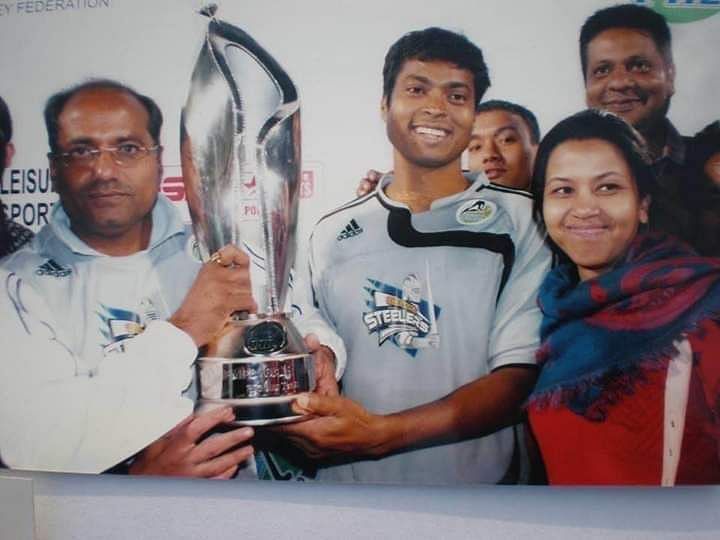
For the first six to eight months, Dilip Tikey trained as a striker. Then Bansal placed him in midfield.
“During the sub-junior Nehru Cup, I realised our team had a weak defence. So I asked Dilip Tirkey to play as a third full-back, a position which was a new concept then. And of course, he played brilliantly and sealed his position as a defender, going on to become one of the best defenders in the world,” says Bansal, 61, who is now living a retired life in Ghaziabad.
Dilip Tirkey’s mentor remembers him as being quiet in his formative years too.
“He was every coach’s delight. He would come to the field, train and leave. If he disagreed with any decision he would put forth his view with dignity. I don’t ever remember ever Dilip arguing.”
Dilip Tirkey continued Sundargarh’s proud hockey tradition
Players from Odisha’s Sundargarh or neighbouring Jharkhand – specifically Hesal village in Khunti district - were mostly from tribal families. In fact, when Dilip Tirkey played for India, the team would usually feature at least three defenders from Odisha in every match. It has been a tradition going back to Michael Kindo, the only tribal member of India’s 1975 World Cup-winning team.
Dilip Tirkey’s teammate and fellow Olympian, Lazarus Barla played defence. Birendra Lakra, Amit Rohidas and Dipsan Tirkey of the current Indian team are all defenders. Exceptions such as 21-year-old Shilanand Lakra, who plays as a forward in the junior Indian team, are rare.
‘Bansal sir’ as he is fondly called by the hockey fraternity for discovering several national talents, has a theory about why tribal players are successful in the sport.
“Tribals are humble by nature and quiet. A lot of people take it as a negative quality but as far as the game is concerned, it is an advantage. Strikers, who score goals, are supposed to be more aggressive in nature."
"Defenders on the other hand need to keep their cool to thwart attacks. So, their less aggressive temperament can help them maintain sanity in a high-pitched match.”
Coach Bansal has a PhD in ‘Socio-Cultural and Educational Influence on Sports: A Case Study of Tribal Hockey Players of Chotanagpur Region’.
Dilip Tirkey’s hockey career
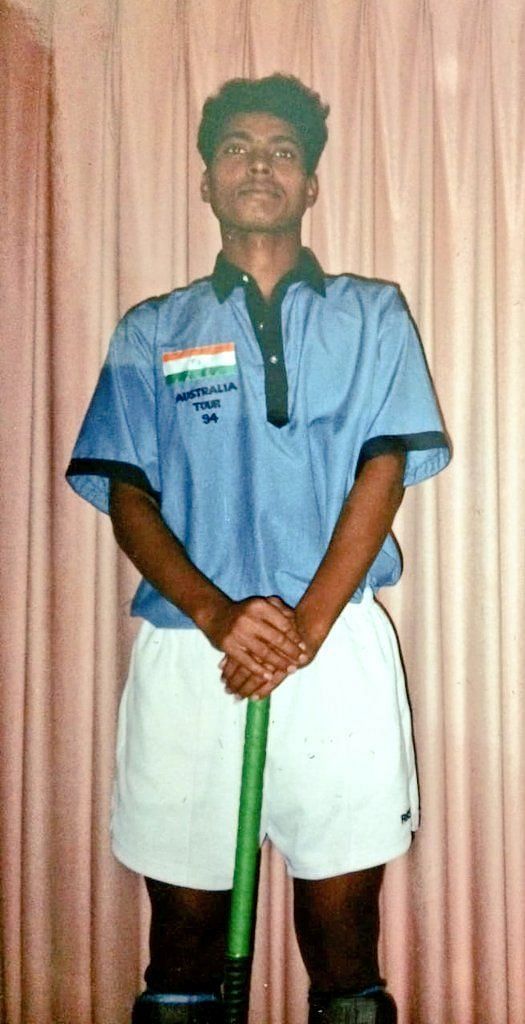
For the next six years till 2001, Dilip Tirkey was a constant fixture in the team; it is a record of sorts and almost unachievable now. He took only three years to reach his 100th international – a milestone which is today the average number of caps earned by a decent hockey player.
At the time of Dilip Tirkey’s international debut against England, fellow defender and his idol Pargat Singh, who had retired from international hockey three years earlier, had been recalled to the Indian side.
“It is never easy to play in front of your idol, let alone play alongside him. But Pargat ji was always supportive. Even if I made mistakes, he would advise me and not shout or demoralise me. It was an honour to play with a great sportsman like him,” says Dilip Tirkey.
Inside the ‘D’ zone, where Dilip Tirkey was positioned, his penalty corner skills were equally good, and he was in perfect positioning to score. If you track hockey, Dilip Tirkey was to men’s hockey, what current skipper Rani Rampal is to the women’s team.
Dilip Tirkey represented India in the 1996 Atlanta, 2000 Sydney and 2004 Athens Olympic Games.
In 2002, the Indian hockey team underwent a revamp after a disastrous World Cup in Kuala Lumpur where India finished tenth out of 16 teams.
Dilip Tirkey was handed over the captaincy of the team as he became the first tribal to captain the Indian hockey team in the post-independence era. He captained the team that won silver at the 2002 Asian Games and gold in the 2003 Afro-Asian Games. He was also a part of the team that won the gold at the Bangkok Asian Games in 1998 and won the 2003 Asia Cup held in Malaysia.
"With perfect timing and positioning, there was a rare penalty he didn’t end up converting into a goal. He had solid power that stemmed from the push of pressure he put on his thighs,” says hockey statistician K Arumugam who has been following Dilip Tirkey’s career since his debut.
“Only extraordinary players play that long. Nowadays, fitness is the prime criterion for selection for the foreign coaches we have. Many players are unable to take on the work it takes to maintain that level of fitness and subsequently leave. Also, there are many more players staking their claim to the national team. Dilip Tirkey played that long because of his consistency and endurance,” explains Arumugam, author of the biography, 'Dilip Tirkey,' published in 2006.
Such was the consistency of his performances that Dilip Tirkey earned the nickname of ‘The Wall’, a sobriquet that was initially bestowed on Rahul Dravid, the legendary Indian cricket player.
Indian athletes and sportsmen do not whine about the short shrift they get vis a vis cricket in the country. For all his achievements, Dilip Tirkey only endorsed two brands briefly: one was a regional Odia cable network, and the other was a chain of stores run by the state-run handloom cooperative.
"I had realised early in my career that whatever I do or my team does, we will never get the adulation and fame that cricketers get. We as a nation worship cricket. So, when I was described as the Rahul Dravid of hockey, I was frankly elated,” says Dilip Tirkey.
In 2005 and 2006, Dilip Tirkey would be invited by the club Klein Zwitserland to play in the Dutch field Hockey League, one of the game’s most competitive leagues in the world.
If hockey dominated India’s sporting achievements until the 1980s, it saw a decline thereafter. The lowest point of the sport was when India failed to qualify for the Beijing Olympics in 2008 when shooter Abhinav Bindra won India its very first individual Olympic gold.
Hockey as a sport has earned the country more fame than any other since independence - India have won a total of eight gold medals, a silver and two bronze medals in Olympics, which is more than the gold medal tallies of Netherlands (current world rank – 3) and Australia (current world rank – 2) - five and four respectively. Thus, India failing to qualify for the Olympics was heartbreaking for spectators and players alike.
If the team had not failed to qualify for the first time in Indian hockey’s 88-long-year history in the competition, Dilip Tirkey would have played his fourth Olympics.
“It was the worst day of my life. It was a nightmare,” reminisces Dilip Tirkey.
Indian hockey did not do as badly in Asia, however. South Korea and Pakistan were the top teams in Asia then.
In the 1998 Asian Games, India edged out South Korea 4-2 in a penalty shootout to win the gold medal. India also won two consecutive Asia Cup titles by defeating Pakistan in 2003 and South Korea in 2007 respectively.
The matches that everyone waited for, like in cricket, were the India Pakistan face-offs. Emotions ran high, and players played under tremendous pressure, but Dilip Tirkey can’t recall any instance of bad behaviour.
“I have played against Sohail Abbas, Waseem Ahmed - who were stalwarts of Pakistan hockey. On the field, we might be pitted against each other, but off the field, we were friends. There was a sense of respect for each other,” says Dilip Tirkey noting the change.
“I think the youngsters today get carried away and should have the maturity to deal with the situation. The players I have played with were all gentlemen and respectable. Earlier, we knew India-Pakistan hype was for the public. For us, it (only) meant 70 minutes of good hockey.”
Back in Sundargarh, Dilip Tirkey was revered as a hero. For youngsters who played the sport, he was the embodiment of success.
21-year old Dipsan Tirkey, another defender in the Indian team, who hails from the same village as Tirkey but isn’t his relative, tries to explain this:
“Dilip bhai had started playing for India before I was born. Growing up, elders at home and in the village would talk about his achievements. Sundargarh had its own star, we didn’t have to look elsewhere for inspiration. It would be possible to achieve success if we emulated him,” says Dipsan Tirkey whose first professional hockey stick was a gift from his idol Dilip Tirkey.
After his retirement, Dilip Tirkey, by far Odisha’s most successful sportsman, was a candidate waiting to be picked up by political parties. The ruling Biju Janata Dal in 2012 nominated him as their choice for Rajya Sabha MP; it is a position one is elected to indirectly by legislators of a state.
Dilip Tirkey would represent the state of Odisha in the upper house of Parliament from March 22, 2012, to April 2018. Ironically, mostly quiet throughout his life, he raised his voice in the Parliament – asking a total of 389 questions, higher than the national average of 344 and the state average of 374. He did use this opportunity to campaign for a Bharat Ratna for the legendary hockey player Dhyan Chand.
Two years later in the run-up to the 2014 general elections, Naveen Patnaik’s government would bet on Dilip Tirkey as their candidate for the Lok Sabha seat of Sundargarh. But the tribals of Odisha are hard to unite politically.
Dilip Tirkey appealed to the increasingly large population of youth as he was already a role model for them. It was the best Patnaik could find in an election expected to be influenced by hockey-loving people of the district.
Dilip Tirkey was young; he was only 36 years old, extremely presentable, a global achiever, non-controversial but for the small fact that he’d married a girl from his own clan, something that his community and even some in his family did not approve of then.
The soft-spoken Dilip Tirkey was pitted against veteran BJP politician and India’s first-ever Tribal Affairs Minister, Jual Oram. The latter’s chances weren’t very bright, but he benefited from the aggressive fight hotelier Dilip Ray put up to win for BJP the legislative seat of Rourkela, one of seven assembly seats contributing to the constituency’s votes.
Dilip Tirkey lost by over 18,000 votes – this was BJD’s only loss in Lok Sabha in a year when it otherwise swept the 20 other Lok Sabha constituencies. He has since not been given another electoral opportunity.
Instead, he was made Chairman of Odisha Hockey Promotion Council in the run-up to the huge push the state would give the sport. Odisha pitches itself today as the ‘home of hockey’, having hosted several international tournaments including the Hockey World Cup in 2018.
Ironically, its brightest hockey star Dilip Tirkey has never played an international match in front of his home crowd, barring an exhibition match against his former teammate Dhanraj Pillay on the newly laid blue astroturf in the run-up to the World Cup in 2018.
The former hockey captain swings a different stick these days at the nine-hole course of the Bhubaneswar golf club.
“Golf looked similar to hockey. The grip is almost the same and also the swing used in hockey can be replicated in golf. So, it wouldn’t be incorrect to say I chose golf because of hockey,” Dilip Tirkey concedes.
He turned professional in golf this year, making his debut at the Golconda Masters 2020.
The only time he does swing a hockey stick is when playing with his ten-year-old son Jayesh who is studying in Bhubaneswar and is trying every sport from football to roller skating. Dribbling the ball in his living room, Dilip Tirkey regrets not having fixed his ankle before retirement.
His first serious sprain happened in 2005 and kept casting a recurring shadow on his fitness and performance, eventually leading him to hang his boots.
“I had the skills, but I didn’t have (the) fitness,” says Dilip Tirkey.
In a sport like hockey that relies on fitness and footwork, injury is a high possibility. The current lot of players like Ramandeep Singh, Rupinderpal Singh and SV Sunil have all faced similar challenges, but managed to make a comeback after a year or so.
Dilip Tirkey, however, was only advised surgery in 2014, four years after he retired from the game. He’d only get his ankles fixed at ‘Sportsmed SA’ a premier sports medicine institute in Australia.
“If the surgery was done earlier, I might have had a chance of making a comeback. By the time he had recovered from the surgery and rehab, I was too old,” Dilip Tirkey says.
The game has become a lot faster today to draw more crowds and sponsors. Fitness levels are a lot higher, and career spans are a lot shorter.
“Look at football – they switched over to playing on grass instead of turf. The pace might have slowed down, but there is ample opportunity to display skill. In hockey too, you tend to make more mistakes while playing on the artificial turf. I understand there is a need to commercialise the sport, but it shouldn’t be done at the cost of a player’s career. If a player can’t play for at least 10 years, his future is at stake,” Dilip Tirkey concluded.